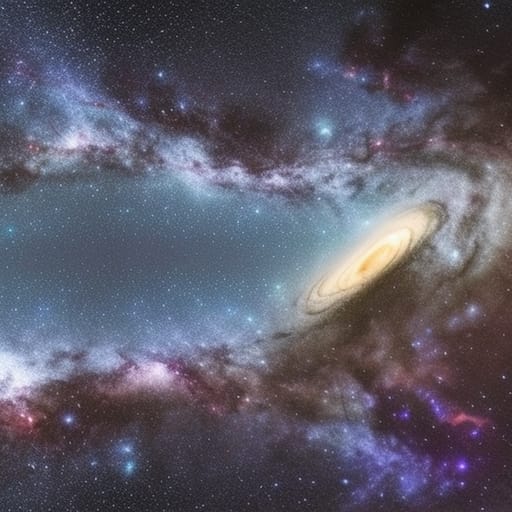Space: Milky Way Galaxy

The Milky Way galaxy is a barred spiral galaxy that contains our solar system, along with hundreds of billions of other stars, planets, and celestial objects. Here are the important aspects of the Milky Way:
Structure: The Milky Way is composed of a central bar-shaped region surrounded by a spiral disk containing stars, gas, and dust. The disk is embedded in a spherical halo of dark matter, which is a type of matter that does not emit or absorb light but has a gravitational influence on visible matter. The galaxy also contains numerous globular clusters, which are spherical collections of stars that orbit the galactic center.
Size and shape: The Milky Way has a diameter of approximately 100,000 to 150,000 light-years and is estimated to contain between 100 and 400 billion stars. Its thickness varies, with the central bulge being about 10,000 light-years thick and the disk being around 1,000 light-years thick.
Galactic center: The center of the Milky Way, located about 26,000 light-years from Earth, contains a supermassive black hole known as Sagittarius A* (Sgr A*), which has a mass of about 4 million times that of the Sun. The region surrounding Sgr A* is crowded with stars, gas, and dust.
Spiral arms: The Milky Way's spiral structure consists of several arms, which are regions of higher density of stars, gas, and dust. Our solar system is located in the Orion Arm, about halfway between the galactic center and the edge of the galaxy.
Formation and evolution: The Milky Way is believed to have formed approximately 13.6 billion years ago, shortly after the Big Bang. It has evolved over time through processes such as star formation, supernovae, and mergers with smaller galaxies.
Galactic rotation: The Milky Way rotates around its center, with stars and other objects following roughly circular orbits. The orbital speed of our solar system is about 230 kilometers per second (515,000 miles per hour), and it takes approximately 230 million years to complete one orbit around the galactic center.
Satellite galaxies: The Milky Way has several smaller galaxies orbiting it, known as satellite galaxies. The most well-known of these are the Large and Small Magellanic Clouds, which are visible from the southern hemisphere.
Cosmic neighborhood: The Milky Way is part of a group of galaxies called the Local Group, which contains around 54 known galaxies, including the Andromeda Galaxy (M31), the Triangulum Galaxy (M33), and numerous smaller dwarf galaxies. The Local Group is part of a larger cosmic structure called the Virgo Supercluster.
Andromeda collision: The Milky Way and the Andromeda Galaxy are approaching each other at a speed of about 110 kilometers per second (68 miles per second). In about 4.5 billion years, they will collide and eventually merge to form a single, larger galaxy.
Exploration and observation: Studying the Milky Way is challenging due to our position within it, which makes it difficult to observe its overall structure. Astronomers use various techniques, including radio, infrared, and optical observations, to map the galaxy and study its composition, star formation, and evolution. The ongoing search for exoplanets within the Milky Way has also provided valuable insights into the potential for life beyond our solar system.